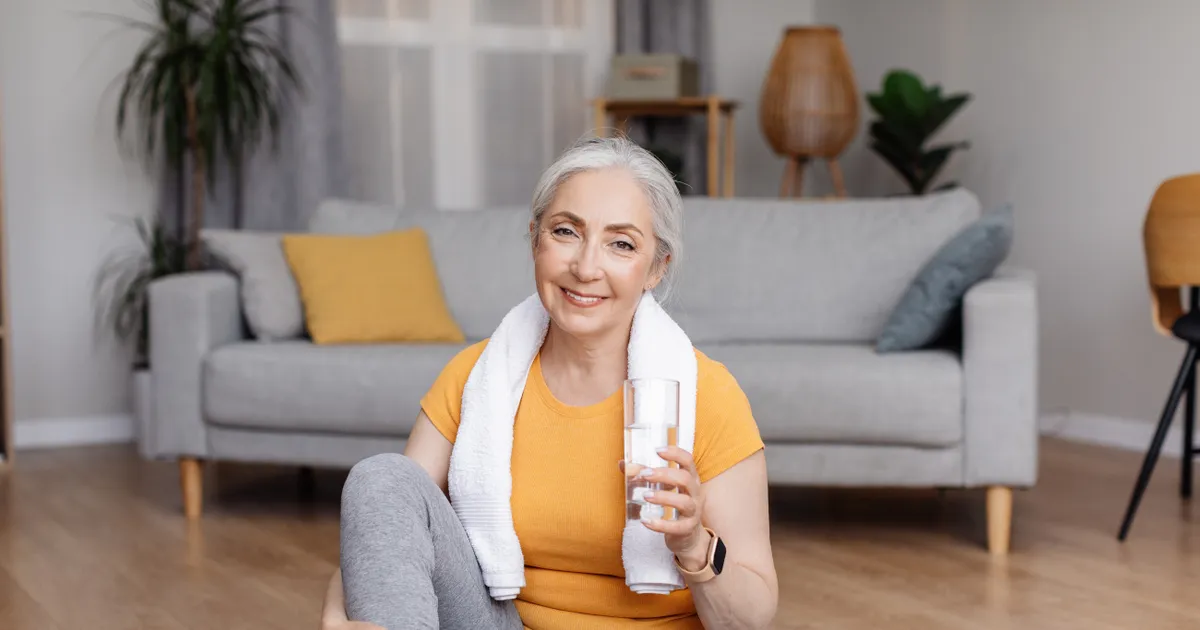Maintaining an active lifestyle is crucial at any age, but it becomes especially important as we enter our golden years. Thankfully, you can learn invaluable exercise tips and tricks for seniors with a quick search online.
Exercise for seniors is not just about physical health; it’s a key to maintaining independence, improving mental health, and enhancing the overall quality of life. As you read on, remember that this journey towards a more active lifestyle is ongoing.
 Shutterstock: Prostock-studio
Shutterstock: Prostock-studioUnderstanding the Benefits of Exercise for Seniors
Regular exercise for seniors has a multitude of benefits. It aids in managing weight, reduces the risk of chronic diseases, improves heart health, and strengthens bones and muscles, reducing the risk of falls and injuries.1
Moreover, staying active boosts mental health, alleviates symptoms of depression, and enhances cognitive function. It’s not just about adding years to life but adding life to years.
Starting Safely: Consulting with Healthcare Providers
Before embarking on any new exercise regimen, it’s important for seniors to consult with healthcare providers. This step ensures that any exercise plan is safe and tailored to individual health conditions and limitations. Regular check-ups can also help track progress and make necessary adjustments to the exercise routine.
Low-Impact Exercises: A Safe Starting Point
Low-impact exercises are ideal for seniors as they are gentle on the joints and reduce the risk of injury.2 Activities like walking, swimming, and cycling are excellent for cardiovascular health without straining the body. Yoga and tai chi are also beneficial, combining physical movement with mental relaxation and balance enhancement.
Strength Training: Essential for Muscle and Bone Health
Strength training is crucial for seniors, helping to maintain muscle mass and bone density. This type of exercise doesn’t necessarily require heavy weights; resistance bands or even body-weight exercises like squats and arm lifts can be very effective. Strength training should be done under proper guidance to ensure correct form and prevent injuries.
Balance and Flexibility: Key to Preventing Falls
Improving balance and flexibility is important for preventing falls, a common concern for seniors. Exercises like leg lifts, simple stretches, and balance-focused activities such as standing on one leg or tai chi can significantly improve stability and flexibility. Regular practice of these exercises can greatly reduce the risk of falls.
Cardiovascular Exercises: Keeping the Heart Healthy
Cardiovascular exercises help in maintaining a healthy heart and lungs. Activities like brisk walking, dancing, or low-impact aerobics are great for boosting heart rate and lung function. Seniors should aim for at least 150 minutes of moderate-intensity aerobic activity per week, as recommended by health experts.
Group Exercises: Social Interaction and Motivation
Participating in group exercise classes or clubs can provide social interaction, which is vital for mental health. It also adds an element of fun and motivation. Many community centers and gyms offer classes specifically designed for seniors, such as water aerobics, chair yoga, or dance classes.
Listening to Your Body: Understanding Limits
It’s important for seniors to listen to their bodies and understand their limits. If an exercise causes pain or discomfort, it should be stopped immediately. Rest days are important, and overexertion should be avoided. Recognizing and respecting the body’s signals is crucial in maintaining a healthy exercise routine.
Adapting Exercises to Individual Needs
Every senior has unique health considerations and physical capabilities. It’s essential to adapt exercises to meet these individual needs.
For instance, those with arthritis might focus on water aerobics, which is gentler on the joints, while someone with more endurance might engage in longer walks or bike rides. The key is to customize activities so they are both enjoyable and beneficial, without causing strain or discomfort.
Incorporating Mind and Body Wellness
Exercise for seniors should also include activities that promote mental well-being. Practices like meditation, deep breathing exercises, and mindfulness can be incorporated into the daily routine. These practices not only enhance mental clarity but also help in managing stress and improving sleep quality.
Regular Medical Check-Ups and Monitoring Progress
Regular medical check-ups are important to monitor the impact of physical activity on overall health. These check-ups can help in adjusting exercise plans in accordance with any health changes or advancements.
Tracking progress, whether it’s through fitness levels, mood improvements, or increased mobility, can also be highly motivating.3
Learn More Today
Staying active in the golden years is about finding a balance between maintaining a healthy, active lifestyle and listening to the body’s needs. Exercise for seniors should be about enjoyment, safety, and sustainability. It’s never too late to start, and the benefits extend well beyond physical health, enriching life with renewed energy and vigor.
As you embark on or continue your journey of staying active, remember that the resources available to you are vast. So, keep exploring, stay curious, and most importantly, enjoy the journey of staying active and healthy in your golden years. Your commitment to an active lifestyle is not just a gift to yourself, but an inspiration to others around you.